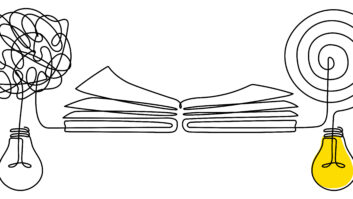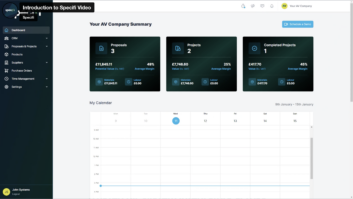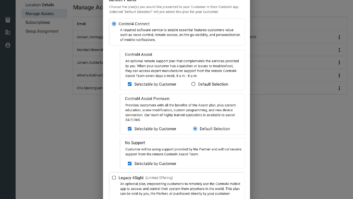
Image: ThinkStock
This is a cautionary tale. A tale of a company fat and happy with a ton of inbound calls and internet traffic. One day that company decided it wanted to grow. Because it had no outbound sales efforts, this caused a ton of headaches.
You probably guessed that it’s my company. Guilty as charged. I realized a few years ago our sales people fell into two buckets; hunters (those who go out and get the business) and farmers (those who take care of existing customer inquires). Unfortunately all we had were farmers. As long as they had customers knocking on the door, they were fine. I was the only one at Livewire hunting.
As we began to grow, the weakness of the selling owner started to affect our business. Most CEDIA companies operate this way. The owner sells most of the projects and everyone else at the organization supports that effort (one of my competitors calls this model Santa and His Elves). I didn’t want that. I wanted an organization where I didn’t matter for sales.
It’s only recently I pulled myself off the weekly sales goal sheet. That’s been really hard and it’s only been possible because of the great team we’ve built. It’s also been tough for me because selling feels so good. It’s such a rush to get someone to greenlight a deal. It’s also a huge distraction for a business owner. Writers call the phenomenon “neglecting the page.” Too many owners (me included) neglect the page (the boring stuff like managing the P&L and strategic growth).
While I’ve been able to step away from sales and focus more on running the business, the outbound sales strategy challenges haven’t gone away. It’s really tough to rhythmically sell large projects using anything other than relationship-driven communications and networking. Because of this, we’ve decided the best approach is to make our sales team as diverse as possible with avatars fitting our customer types. Blue Blood? We’ve got a guy. Country boy or Alpha Dog? We’ve got a guy. Buttoned up banker or Napoleon? We’ve got a guy. That may sound crazy, but we got tired of losing jobs over personality conflicts. Now we try our best to pair customers off with the best avatar we can.
Even with all of that effort, the machine still only works with inbound traffic. We spend a ton of time, money, and effort to create that inbound traffic. Referrals make up the bulk of our inquiries. We get a few inquiries online (search engine marketing and optimization) and another large portion comes through our builder relationships. So how do you take an organization fat and happy with inbound traffic and incent outbound sales?
We want to do $4 mm this year. That’s roughly $80k weekly. We measure it every week. We also ask our guys the same question every week; how many outbound calls did you make to the leads we pay for in our CRM? The answer usually comes back the same…. crickets. Since most of them make their numbers consistently, the cash covers the sin we’re committing. If the inbound calls ever dry up, we’re screwed.
Since we’re not much for crying in our milk or letting grass grow under our feet, we’re beginning to implement incentive programs for our salespeople to make outbound calls. The most challenging phenomenon we’re finding is that making those calls requires discipline and a bent toward routines and good daily habits. Inbound traffic hides those deficiencies in most salespeople. That’s the cautionary tale piece of the story. Don’t make the mistakes we made and find out ahead of time what sorts of organizational skills your salespeople have. Have someone check their car interior in the parking lot during the job interview. Messy car? What else is messy (obviously this is oversimplifying, but hopefully you get the idea)? Since we’ve uncovering these traits (or lack thereof) in our own people, we’re working to coach them along. We’ll ultimately end up stronger as a result but I wish we’d de-emphasized the idea of the selling owner a long time ago.
To avoid become where we were, ask yourself these questions:
1. Is the owner the center of the universe?
2. Does one person beyond the owner sell most of the projects or is it a normal distribution?
3. Do we hold our salespeople accountable?
4. Do we have a culture of trust and collaboration?
I think it’s funny the comment box below usually gets used for everything but sharing experiences. Here’s my challenge this week: Post your experiences transitioning from a business where it all came in the door (farming and order taking) to a business where going out and getting business became a cultural priority (hunting). Let’s learn from each other.
Stay frosty and see you in the field.
Henry Clifford ([email protected]) is president of Livewire, an integration firm in Richmond, VA.








